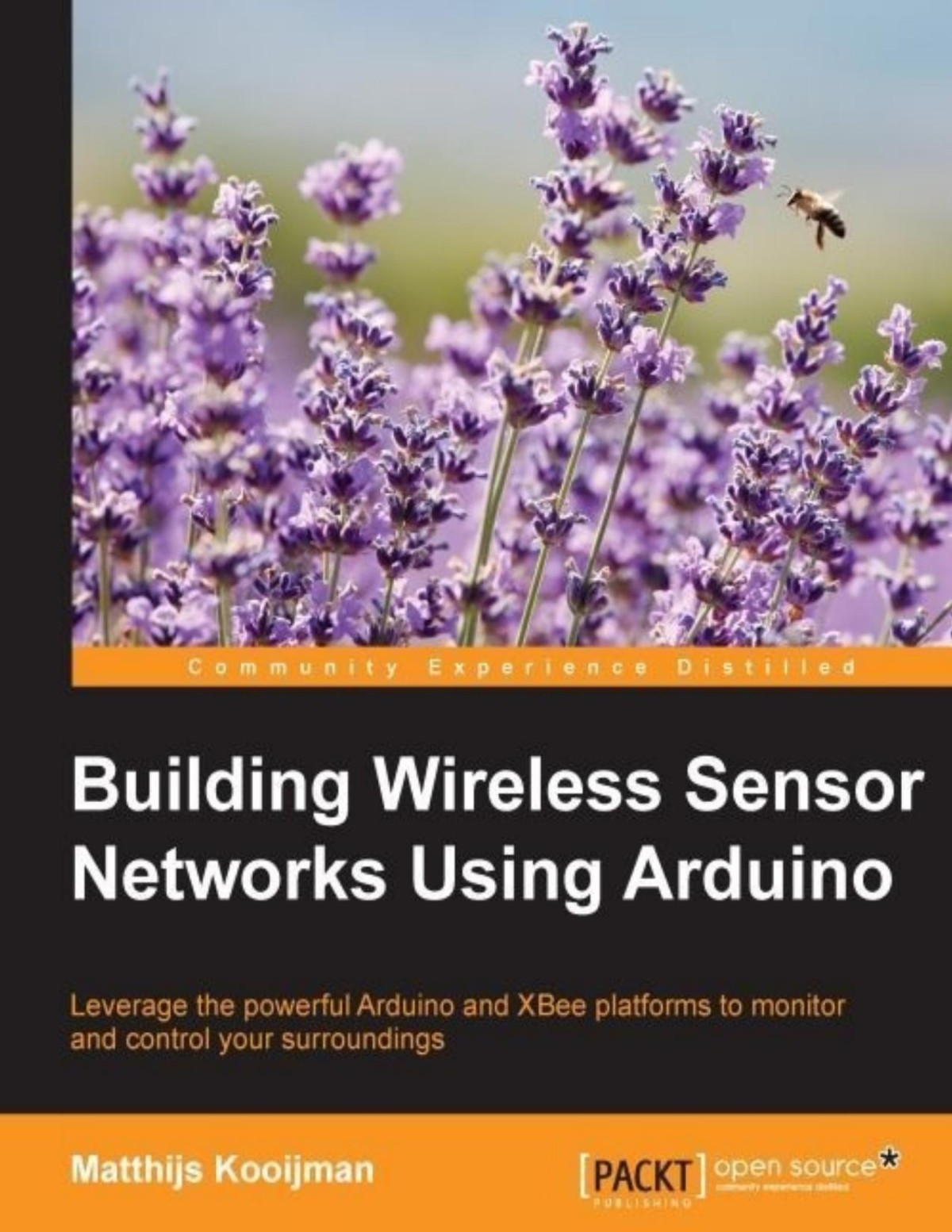

Most ebook files are in PDF format, so you can easily read them using various software such as Foxit Reader or directly on the Google Chrome browser.
Some ebook files are released by publishers in other formats such as .awz, .mobi, .epub, .fb2, etc. You may need to install specific software to read these formats on mobile/PC, such as Calibre.
Please read the tutorial at this link. https://ebooknice.com/page/post?id=faq
We offer FREE conversion to the popular formats you request; however, this may take some time. Therefore, right after payment, please email us, and we will try to provide the service as quickly as possible.
For some exceptional file formats or broken links (if any), please refrain from opening any disputes. Instead, email us first, and we will try to assist within a maximum of 6 hours.
EbookNice Team

Status:
Available4.7
41 reviews
ISBN 10: 1784395587
ISBN 13: 9781784395582
Author: Matthijs Kooijman
Arduino has been established as the de facto standard microcontroller programming platform, being used for one-off do-it-yourself projects as well as prototypes for actual products. By providing a myriad of libraries, the Arduino community has made it very easy to interact with pretty much any piece of hardware out there. XBee offers a great range of low-power wireless solutions that are easy to work with, by taking all of the complexity of wireless (mesh) networking out of your hands and letting you focus on what to send without worrying about the how. Building wireless sensor networks is cost-effective as well as efficient as it will be done with Arduino support. The book starts with a brief introduction to various wireless protocols, concepts, and the XBee hardware that enables their use. Then the book expands to explain the Arduino boards to you, letting them read and send sensor data, collect that data centrally, and then even control your home from the Internet. Moving further more advanced topics such as interacting through the standard Zigbee Home Automation protocol, or making your application power-efficient are covered. By the end of the book, you will have all the tools needed to build complete, real-world solutions.
1. A World without Wires
XBee radio hardware
XBee product families
Versions and variants
Official XBee documentation
Your first transmission
Using the SparkFun XBee Explorer USB
Getting and running XCTU
Updating the firmware
Failed firmware updates
Configuration
Talking to the XBee module
Receiving data
Uploading the sketch
Connecting the XBee
Receiving data
Switching to API mode
First module in API mode
Sending data
Second module in API mode
Starting and joining a network
Module addressing
Network scanning and remote configuration
The Commissioning button and LEDs
Making your network secure
Distributing the network key
Trust center link key
Trust center terminology differences
Selecting encryption keys
Setting up your secure network
Disabling network joining
Other XBee families
Configuration values
Summary
2. Collecting Sensor Data
Hardware setup
Serial on XBee
Handshaking signals
Voltage levels
Serial on a computer
Serial on Arduino
XBee shields
Other shields
Software setup
Example sketches
Variable types
PROGMEM and F() strings
Pointers
Serial port setup
The xbee-arduino library
Creating the sketch
Sending and receiving data
Sending data
The ZBTxRequest objects
Creating the sketch
Blocking and polling
Running the sketch
Callbacks
Callback types
Callback limitations
Receiving data
The ZBRxResponse objects
Creating the sketch
Collecting sensor data
Reading a DHT22 sensor
Handling packets using binary.h
Building and sending a packet
Constructing a packet using binary.h
Creating the sketch
Receiving and parsing a packet
Parsing a packet using binary.h
Creating the sketch
Troubleshooting
Communication with the XBee module is not working
Modules are not joining the network
Modules cannot talk to each other
Summary
3. Storing and Visualizing Your Data
Storing your data in the cloud
Introducing Beebotte
Channels and resources
Security
Access protocols
Sending your data to Beebotte
Preparing Beebotte
Connecting your Arduino to the Internet
Writing the sketch
Visualizing your data
Accessing your data
Keeping your data locally
Sending data over the serial port
Receiving data over the serial port
Summary
4. Controlling the World
Controlling your heating and/or cooling system
Replacing the thermostat
Controlling mains power
Hairdryer – an alternative
Control systems
Adding setpoint control
Subscribing to events
Reading events
Remembering sensor readings
Thermostat controller
Controlling a relay
Controlling off-the-shelf ZigBee devices
ZigBee profiles, endpoints, and clusters
ZigBee public profiles
Selecting a ZigBee device
Talking to a ZigBee on/off device
Joining the network
Factory reset in case of problems
Discovering services
The ZBExplicitTxRequest objects
Sending a message
The ZBExplicitRxResponse objects
Receiving messages
Receiving on/off command responses
More ZigBee features
Summary
5. Standalone XBee Operation
Creating a window sensor
Connecting things
Powering the module
Connecting the window sensor
I/O pin naming
Configuring the XBee module
Remotely sampling the pins
Querying the pin state
Automatically sending the sample data
The configuration values
Receiving the samples on the coordinator
The ZBRxIoSampleResponse objects
Receiving the I/O samples
Creating a standalone relay
Connecting things
Configuring the XBee module
Remotely toggling an output pin
Summary
6. Battery Power and Sleeping
Battery power
Lithium-ion and lithium polymer batteries
Regulators
Saving power
Power saving techniques
Knowing what to optimize and when to stop
XBee power-saving
The XBee sleep modes
Configuring the network
The sleeping window sensor
Battery power
Power usage
Arduino power-saving
The XBee configuration
Hardware
Powering the Arduino
Hardware connections
Putting the Arduino to sleep
Sleep modes
Waking up
Creating the sketch
Power usage
Summary
Index
building wireless sensor networks
building wireless sensor networks using arduino
building wireless sensor networks pdf
wireless building automation systems
wireless sensor network book
wireless ebook
Tags: Matthijs Kooijman, Wireless, Sensor